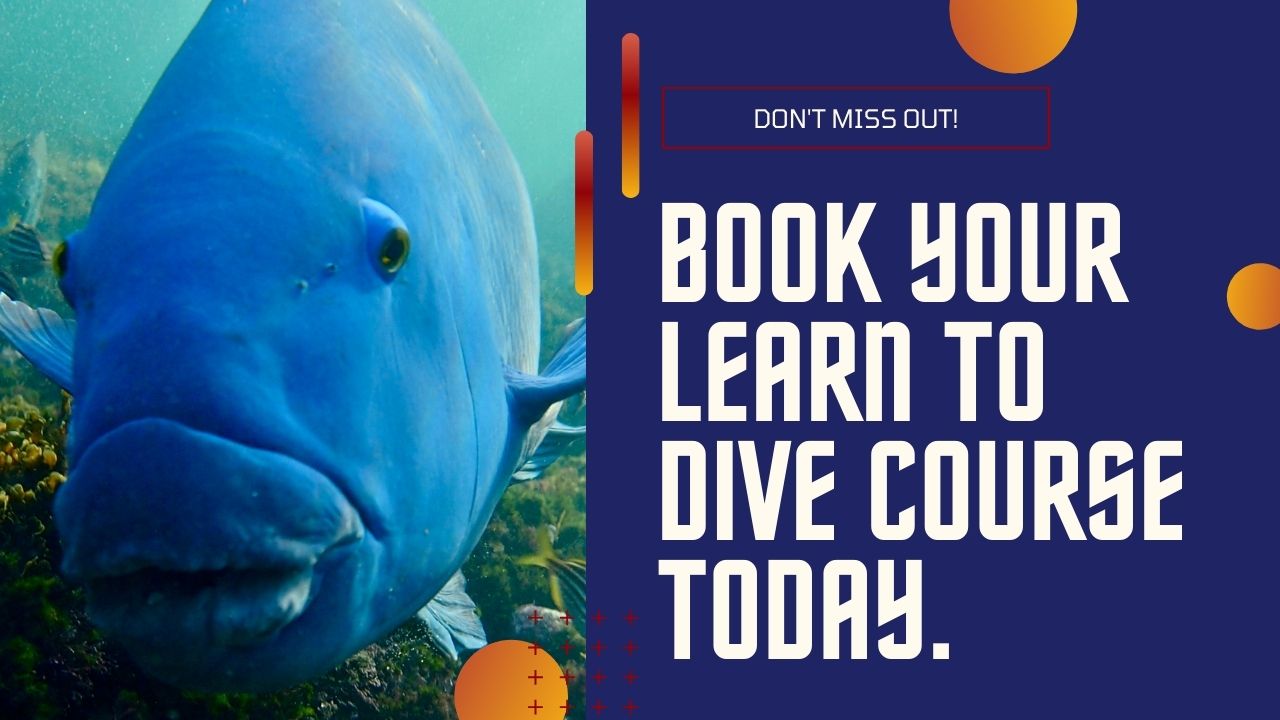You have 0 product(s) in your cart.
Abyss Scuba Diving
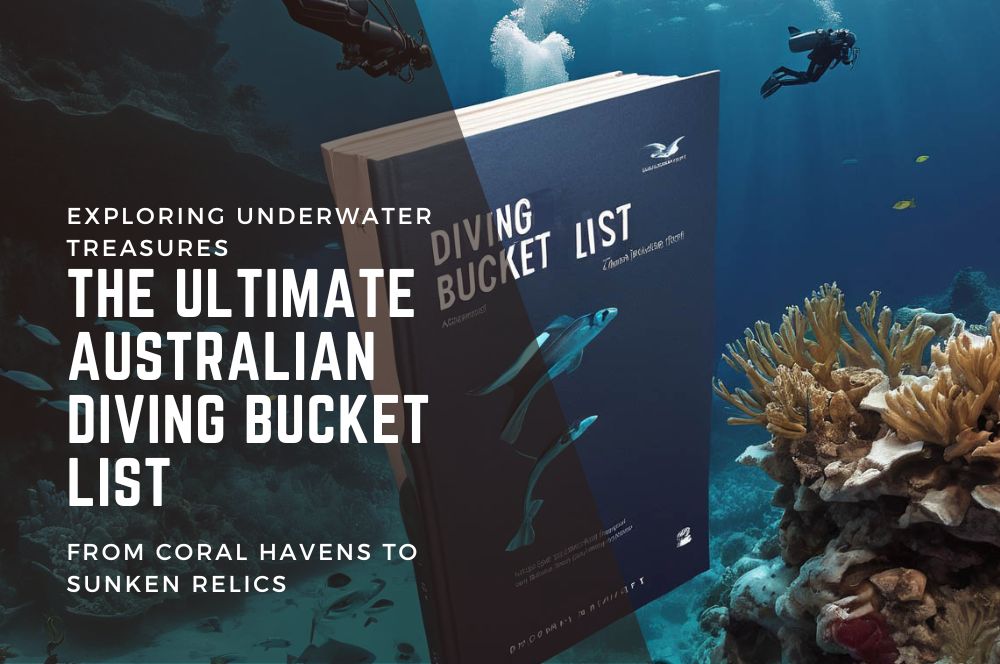
The Ultimate Australian Diving Bucket List: Exploring Underwater Treasures from Coral Havens to Sunken Relics
Australia's expansive coastline is a diver's paradise, offering a tapestry of underwater escapades that are as rich in diversity as they are in beauty. The Ultimate Australian Diving Bucket List takes you on a transformative journey beneath the waves, where the vibrant tableaus of the Great Barrier Reef, the gentle whale shark encounters in Ningaloo, and the enigmatic allure of historic wrecks like the SS Yongala await. Embrace the spirit of aquatic discovery and dive into the educational and thrilling experiences that make up Australia’s subaqueous splendor.
Key Takeaways
-
Australia is a dream destination for divers, featuring bucket list experiences like the unparalleled biodiversity of the Great Barrier Reef, the historic allure of the SS Yongala wreck, and the chance to swim with the gentle whale sharks of Ningaloo Reef!
-
Discover hidden underwater treasures like the pristine Rowley Shoals, the hauntingly beautiful kelp forests of Tasmania, and the vibrant marine carnival on Cuttlefish Coast!
-
Australia’s seas are alive with astonishing marine creatures like dwarf minke whales, the elusive leafy sea dragons, and vivid reef fish, all offering divers an unforgettable aquatic adventure!
Exploring Australia's Underwater Marvels
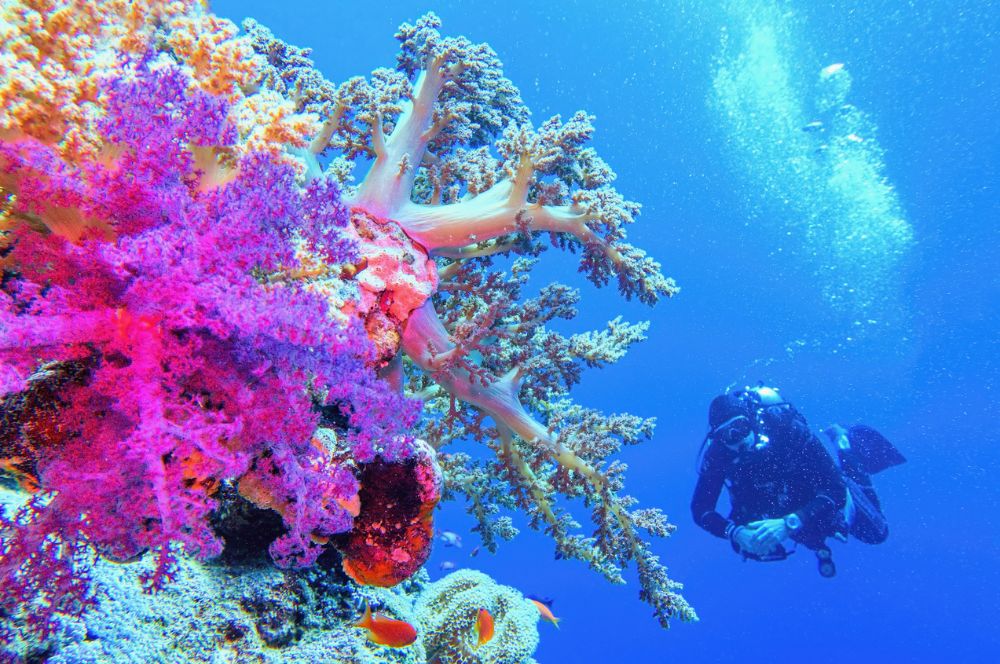
The moment you submerge into Australia’s aquatic vastness, you understand that scuba diving here transcends mere activity, becoming an exploration of marine wonder in its purest form. Australia’s underwater offerings are as vast as the continent itself, encompassing the world-renowned Great Barrier Reef, the whale shark havens of Ningaloo Reef, and the historic depths of the SS Yongala wreck,. Each dive site is a page in an epic saga, inviting scuba divers of all levels to write their own stories of adventure, from beginners taking their first breath underwater to experienced divers seeking the thrill of more remote reefs.
Take, for instance, the Great Barrier Reef, the jewel of Australia’s Coral Sea, where scuba diving morphs into a mystical journey through a thriving underwater world. On the west coast, Ningaloo Reef beckons with its crystal-clear waters and gentle whale sharks, offering a once-in-a-lifetime opportunity to swim with these majestic creatures. For those who are drawn to the mysteries of the deep, the SS Yongala wreck lies in wait, promising an unforgettable dive into history and the thriving marine life that has claimed the vessel as its own,.
Every destination represents more than just a dive site; it’s a unique chapter in the narrative of diving in Australia. The stories are endless, the experiences unparalleled, and the marine life, from the tiny reef fish to the graceful manta rays, from sea turtles to the leopard sharks, is as diverse as the continent itself. So whether your dream is to glide alongside the large pelagic marine life of the Coral Sea or marvel at the rare coral species of a remote fringing reef, the ultimate Australian dive holiday awaits you,.
The Great Barrier Reef: A Diver's Paradise
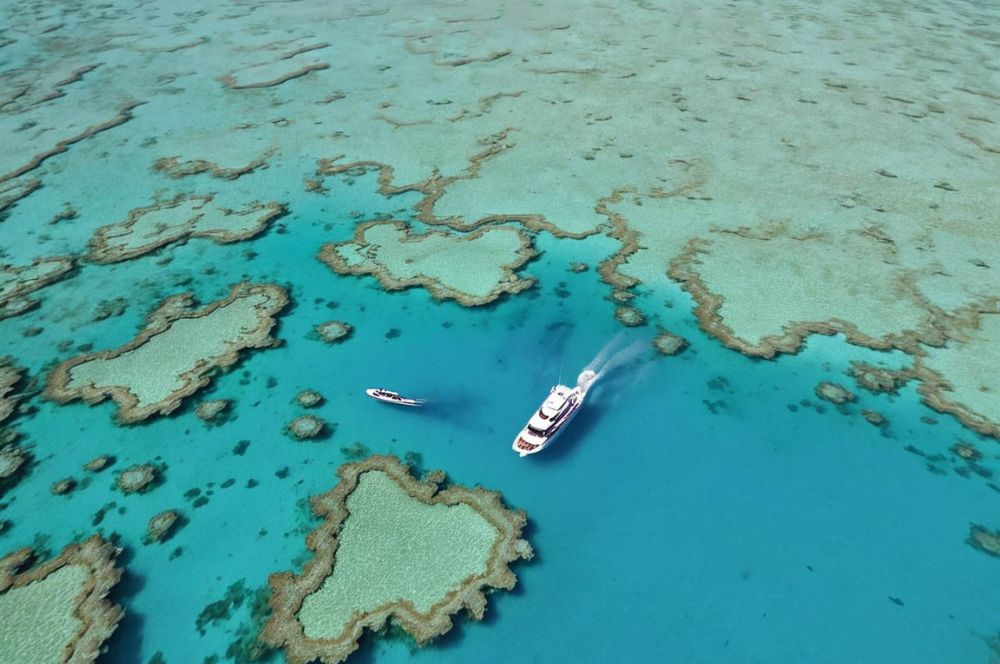
The Great Barrier Reef extends beyond being simply a dive site; it’s a living, sprawling mosaic stretch of over 2,300 kilometers, comprising an entire underwater universe. Recognized as a UNESCO World Heritage site, this colossal reef system houses an astounding array of marine life that captures the imagination of every scuba diver. Imagine descending into the warm, clear waters and being greeted by the dance of over 1,500 fish species and more than 450 types of hard corals - a spectacle of biodiversity that is as mesmerizing as it is vast.
Dive liveaboard trips take you from one fantastic dive site to another, with places like:
-
Lady Elliot Island
-
Flynn Reef
-
Osprey Reef
-
Agincourt Reef
These locations offer encounters with everything from the smallest tropical fish to the largest manta rays. Operators like Mike Ball Dive Expeditions provide unforgettable scuba diving experiences, whether you’re seeking the thrill of diving with sharks at Osprey Reef or exploring the underwater beauty of Agincourt Reef. The Great Barrier Reef caters to every level of diver, from those seeking a gentle introduction to the underwater world to advanced divers ready to explore the outer limits of the southern Great Barrier Reef.
Among the best dive sites, Cod Hole and the Whitsunday Islands stand as iconic landmarks in the heart of every scuba diver. Here are some reasons why they are considered top dive sites in Australia:
-
The ribbon reefs unfold like a red carpet, inviting you to a premiere of the underwater world’s most incredible marine life.
-
The dive resorts and shops peppering the coastline make diving in Australia a convenient and enjoyable experience.
-
Diving in Australia allows you to explore one of the planet’s most remarkable ecosystems.
Ningaloo Reef: Swimming with Whale Sharks
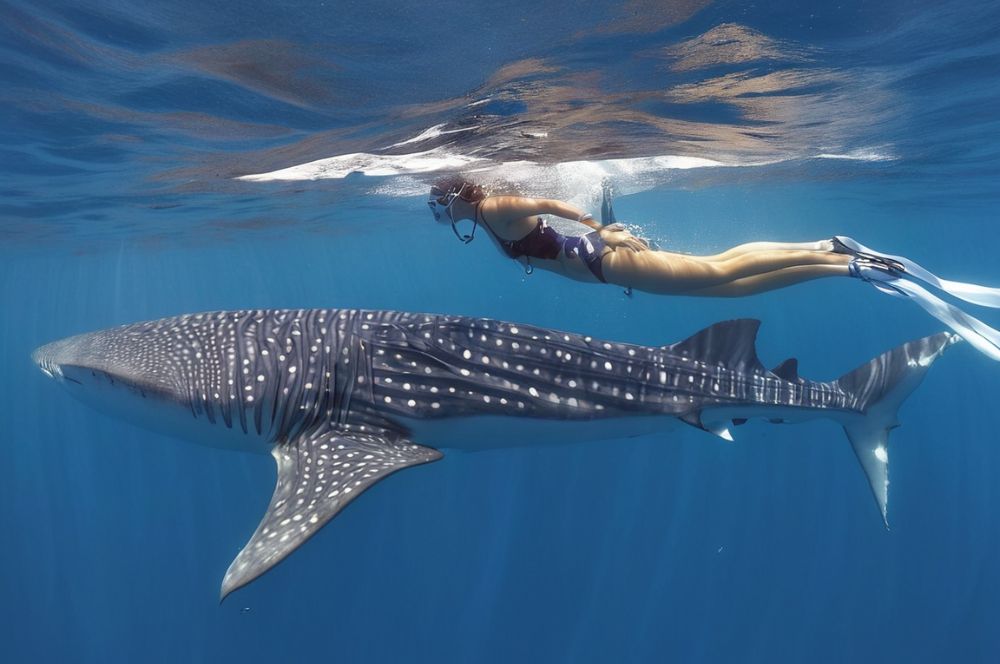
Ningaloo Reef, a World Heritage-listed site off the coast of Western Australia, is a sanctuary where the desert meets the sea and where divers come face to face with the gentle giants of the ocean—whale sharks. Between mid-March and mid-July, the clear waters of Ningaloo become a stage for one of nature’s most extraordinary performances: the peaceful whale shark migration.
From the charming town of Coral Bay, you can transition seamlessly from the soft sands into the reef’s embrace, snorkeling or diving alongside countless marine creatures. With Ningaloo Reef Dive, every detail is taken care of, from providing the necessary equipment to ensuring your day is filled with refreshing meals and unforgettable underwater encounters. For those seeking a touch of luxury in this remote paradise, Sal Salis Ningaloo Reef Resort offers an eco-friendly camping experience that doesn’t spare on comfort or the opportunity to swim with not only whale sharks but also the majestic humpback whales.
Ningaloo boasts a rich and diverse marine biodiversity, which includes diverse marine life. As you glide through the water, you might be accompanied by playful manta rays, curious sea turtles, and pods of dolphins. Depending on the time of year, the reef shifts its cast of characters, ensuring that every dive is a unique performance by the inhabitants of this incredible marine environment.
Wreck Diving: SS Yongala's Underwater Legacy
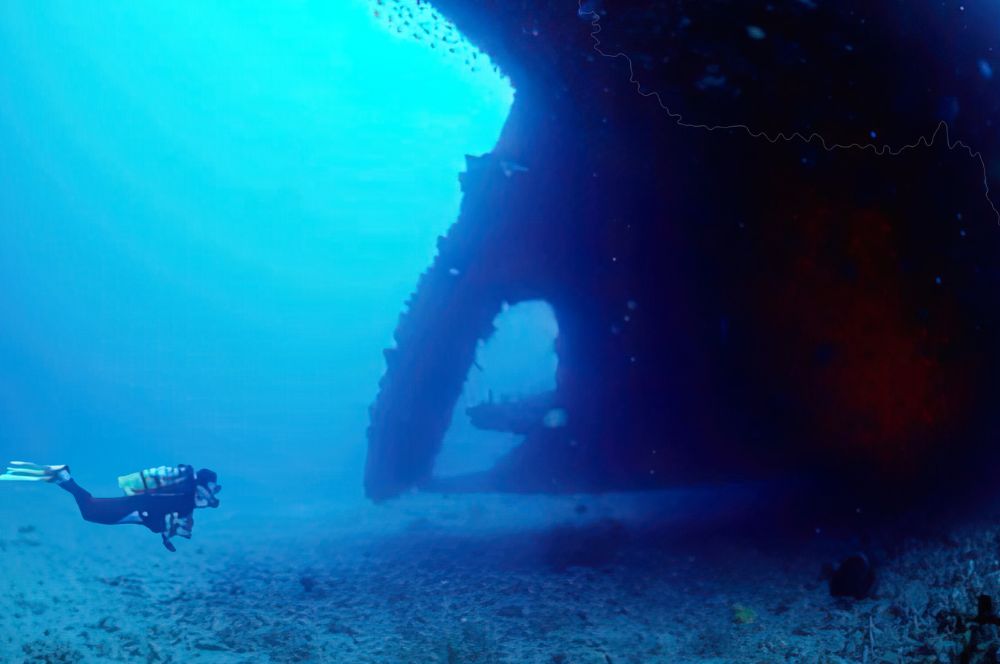
The SS Yongala, submerged over a century ago by a cyclone, holds a tale steeped in mystery and tragedy. No lifeboats were launched, and no bodies were recovered, leaving the wreck to rest in silence until it was rediscovered in the 1950s. Today, the SS Yongala is an underwater sanctuary for a plethora of marine life and a must-visit dive site for those passionate about wreck diving.
The Yongala wreck, lying 14-28 meters below the surface, is a biodiverse haven that has been embraced by the sea. Coral has blanketed its structure, making it a home for:
-
giant groupers
-
marble rays
-
barracudas
-
a variety of sharks
Divers who venture here are rewarded with a spectacle that merges history with natural beauty, offering a diving experience that is both haunting and vibrant.
Due to its depth and the potential for strong currents, the Yongala wreck is a site recommended for advanced divers. A dive here is a journey through time, and with local operators like Yongala Express, even the journey to the wreck becomes an enriching part of the experience, complete with a history talk to set the scene. As one of the best dive sites in Australia, the Yongala serves as a reminder of the sea’s power to both take and give life, creating an underwater world that is as unforgettable as it is humbling.
Pristine Reefs and Remote Escapes
Venturing beyond the well-trodden path, you can uncover more of Australia’s concealed diving gems, leading you to unspoiled reefs and secluded havens where the underwater world preserves a timeless aura. Some of these hidden diving spots include:
-
Hidden Blue Hole
-
Elisabeth Reef
-
Julian Rocks
-
Blairgowrie Pier
The choices for a unique diving trip are as endless as the ocean itself.
The Coral Sea, a remote expanse beyond the Great Barrier Reef, promises adventure diving at its finest. Here, seasoned divers can plunge into deep reef exploration, chasing the thrill of discovery in spots like Osprey Reef known for its exceptional wall diving and the lure of underwater photography. For those looking for a dive suitable for all levels, Christmas Island and Lord Howe Island offer breathtaking diving trips amidst their UNESCO World Heritage-listed beauty.
Whether it’s venturing to the navy pier of Western Australia, renowned for its macro life, or embarking on a liveaboard trip to more remote reefs, each dive site across Australia’s vast landscape holds the promise of an extraordinary interaction with the underwater world. The marine life here is diverse, and the experiences are as vast as the continent itself, ensuring that every dive is a unique chapter in your personal diving story.
Rowley Shoals' Untouched Coral Atolls
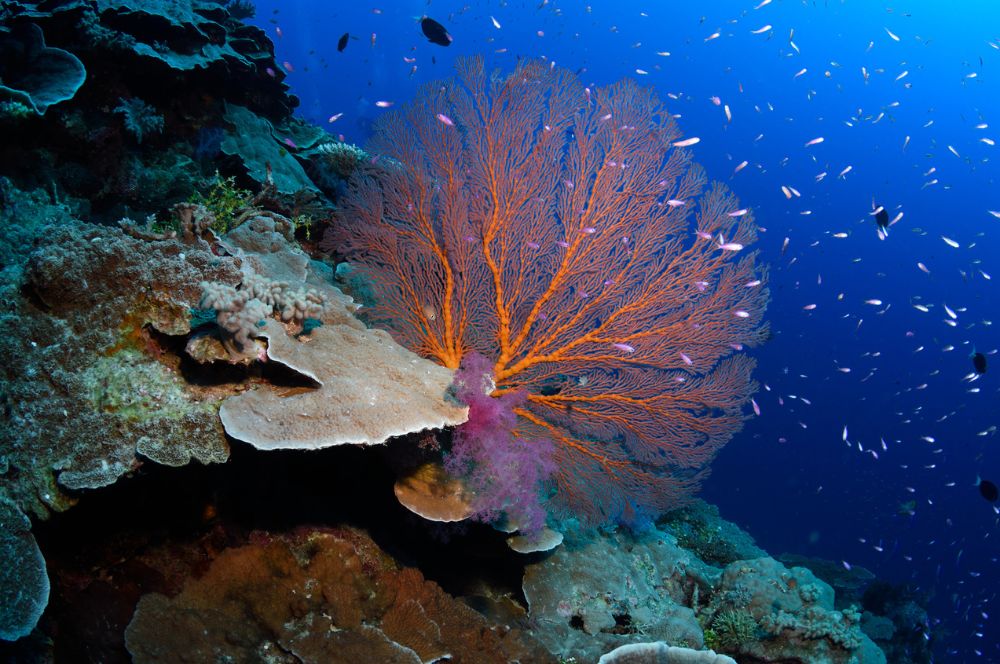
Rowley Shoals, a trio of coral atolls located off the coast of Broome, is a pristine gem in Australia’s oceanic crown. The remoteness of Clerke Reef and its siblings has preserved their marine environment, leaving it virtually free from the touch of pollution and human interference. Diving here is a privilege, with over 650 species of fish and healthy coral life that thrive in the shoals’ clear waters,.
Accessible only by liveaboard dive trips, the Rowley Shoals offer an exclusive experience that feels like entering a private underwater kingdom. Here, divers can enjoy:
-
Drift dives that ride the strong currents
-
Revel in the abundance of vibrant shallow coral gardens
-
Embark on night dives that reveal the atolls’ nocturnal secrets
The conservation efforts that protect Mermaid Reef ensure that every encounter is with an ecosystem that is as healthy as it is enchanting.
The waters around Rowley Shoals exhibit extraordinary visibility, frequently surpassing 30 meters, presenting a paradise for underwater photographers. The temperature, a consistent 23 to 30 degrees Celsius, invites divers into a world that is both invigorating and soothing. Each dive here is a discovery of untouched beauty, a reminder of the ocean’s power to create sanctuaries that are both vibrant and serene.
The Singular Geography of Fish Rock Cave
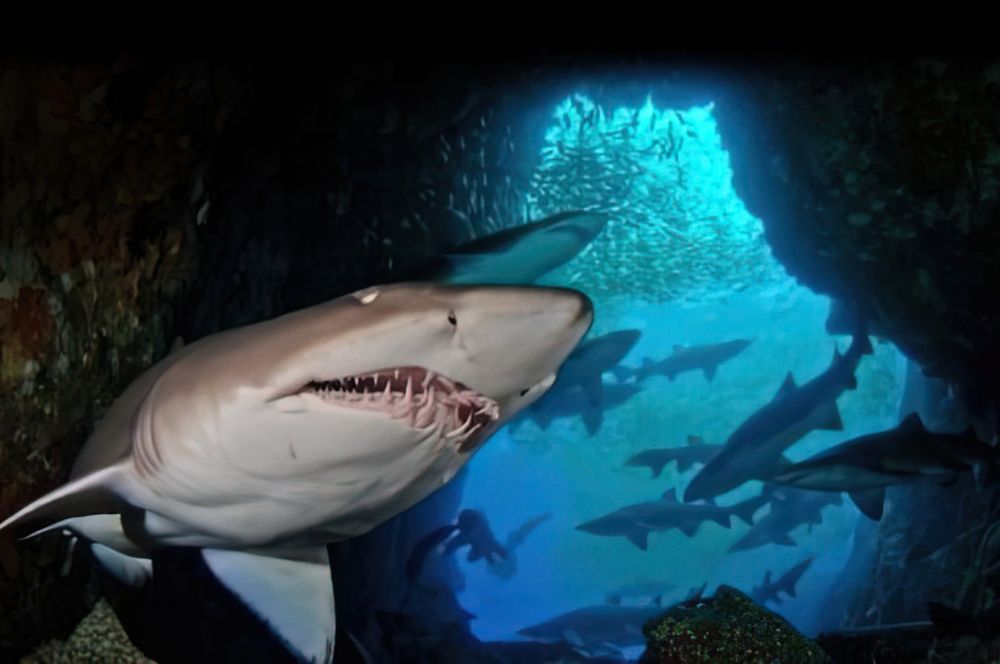
Fish Rock Cave, a top diving destination at South West Rocks, offers a thrilling 125-meter underwater passage, Australia's only true ocean cave. Divers mingle with friendly grey nurse sharks, turtles, black cod, and vibrant reef fish, enhancing the cave's allure.
The cave's entrance, at 24 meters deep, introduces divers to an ethereal world where light filters through like rays in a cathedral. Accessible year-round, Fish Rock Cave is suitable for all diving levels, though booking ahead is recommended for this popular site.
Exceptional visibility reveals the cave's geological splendor, including ancient stalactites and stalagmites. The cave is a haven for marine life such as docile grey nurse sharks, making it a diving highlight.
Divers can also spot bull rays, eagle rays, and giant cuttlefish among the diverse fish population. The cave's unique environment is ideal for underwater photography.
Diving in Fish Rock Cave requires awareness due to its various entry and exit points. It's best to dive with a knowledgeable guide for safety. The cave's walls, adorned with colorful sponges, corals, and sea fans, add to the underwater spectacle.
Tasmania's Giant Kelp Forests
Dive into the temperate waters of Tasmania, and you’ll find yourself enveloped in the enchanting embrace of the giant kelp forests. These underwater forests, found along the island’s east coast, are a natural wonder, teetering on the edge of endangerment, yet they still offer a diving experience like no other. The kelp, towering like the columns of an ancient temple, creates a habitat that is as unique as it is critical for the marine life that calls it home.
The optimal months for diving in these forests fall between December and February, when water temperatures peak at a warm 20 to 24 degrees Celsius. The visibility is at its clearest from January to March, offering divers the chance to navigate through the kelp’s labyrinth, discovering swim-throughs and serene pools that feel like secret chambers of a submerged castle,.
The giant kelp forests of Tasmania are a diver’s fairytale, a rare and delicate ecosystem that sways with the currents, playing host to a variety of marine life that finds shelter within its fronds. Diving here is a serene and surreal experience, a journey into a part of the underwater world that is as fragile as it is beautiful, reminding us of the delicate balance that exists beneath the waves.
Hidden Gems: Kangaroo Island and Cuttlefish Coast

Australia’s diving repertoire holds hidden gems that beckon the intrepid diver to explore areas less traveled, such as the kelp forests of Kangaroo Island and the Cuttlefish Coast near Whyalla. The latter, renowned for the world’s largest aggregation of Australian Giant Cuttlefish, transforms into an underwater carnival from May to August as thousands of these cephalopods converge to breed,.
Dive locations such as Black Point and Stony Point feature infrastructure including wooden staircases, guiding divers straight to the cuttlefish breeding grounds. The water, although cooler with temperatures between 12°C to 15°C, is a gateway to a spectacle unlike any other, where divers and snorkelers can witness a natural phenomenon that is both unique and visually stunning.
Meanwhile, Kangaroo Island offers a chance to explore distinct kelp forests and swim with the playful Australian sea lions, adding a touch of whimsy to the diving experience. The waters around the island are a testament to the diversity of Australia’s marine habitats, nurturing creatures big and small, and providing divers with encounters that are both intimate and awe-inspiring.
Marine Encounters: Australia's Diverse Aquatic Life
Embark on a journey to the heart of Australia’s seas to uncover a world teeming with a remarkable variety of marine creatures. The waters surrounding this vast continent are home to some of the most spectacular marine encounters imaginable, including:
-
Sharks
-
Minke whales
-
Leafy sea dragons
-
Spinner dolphins
-
Reef sharks
-
Wobbegong sharks
-
Macro life
Whether you’re diving off the coasts of Christmas Island, marveling at the spinner dolphins and reef sharks, or exploring the underwater world of Navy Pier with its wobbegong sharks and macro life, the aquatic life in Australia is as rich as the stories it inspires.
Encountering the grey nurse shark, with its formidable appearance yet gentle nature, is a highlight for many divers, particularly at sites like Wolf Rock on the Fraser Coast. And for those who dare, Port Lincoln offers cage diving with the apex predator of the sea, the Great White Shark. The spider crab migration at Blairgowrie Pier is another natural marvel, showcasing the diversity and spectacle of marine life interactions that are available to divers in Australia.
Every dive in Australia is a chance to meet the ocean’s inhabitants up close, to swim in their world, and to witness behaviors and interactions that are as varied as the species themselves. The marine life here invites divers into an immersive experience, one that connects them to the larger story of the ocean and its myriad of characters. So, gear up and prepare to be amazed by the underwater encounters that await in Australia’s diverse aquatic life.
Reef Fish and Coral Species: Colourful Inhabitants
The marine world of the Great Barrier Reef is a vibrant tapestry woven with the intricate patterns and colours of its reef fish and coral species. Diving here is like entering a living gallery, where each creature is a work of art. Some of the stunning fish species you can encounter include:
-
Angelfish
-
Butterfly fish
-
Damselfish
-
Triggerfish
These fish showcase a palette of hues that could rival any masterpiece. And of course, who can forget the iconic clownfish, which reminds us of the beauty and fragility of these underwater ecosystems.
The marine life that divers can witness in Australia includes:
-
The grouper fish, with its robust body
-
The parrotfish, with its vivid shades and beak-shaped mouth
-
Blue devil fish
-
Harlequin fish
These species add to the spectrum of marine life found in Australia’s dive sites, including the Great Barrier Reef and Kangaroo Island.
The north coast of Kangaroo Island, in particular, invites divers to explore its fascinating caves and swim-throughs that are inhabited by red snapper, blue gropers, and schools of silver drummer fish. Each dive site, from the bustling coral metropolises to the more remote reefs, is a chapter in the story of Australia’s colourful reef fish and coral species, waiting to be discovered and appreciated by those who venture beneath the waves.
Majestic Giants: Dwarf Minke Whales and Humpback Whales
Divers often find themselves speechless when swimming with the dwarf minke whales. These majestic creatures exhibit a natural curiosity toward humans, allowing for meaningful and extended encounters that can last over 10 hours. The peak season for such interactions is during the winter months of June and July when the whales migrate through the Great Barrier Reef, providing divers and snorkelers with memories that last a lifetime.
To ensure these interactions are respectful and sustainable, it’s essential to choose tour operators endorsed by the Great Barrier Reef Marine Park Authority. Based primarily in Port Douglas and Cairns, these operators provide the legal and safe means to swim with the whales, offering an experience that is both thrilling and eco-conscious. The best time to venture to the reef for these encounters is from June to August, when the dwarf minke whales are most sociable and the conditions are ideal for diving.
But the dwarf minke whales aren’t the only giants that grace Australia’s waters. Humpback whales, with their impressive size and acrobatic breaches, add to the grandeur of the underwater world. Divers who time their trips with the whales’ migration can witness these leviathans in their natural habitat, creating a connection with the marine environment that is profound and deeply moving.
Rare and Endemic: Leafy and Weedy Sea Dragons
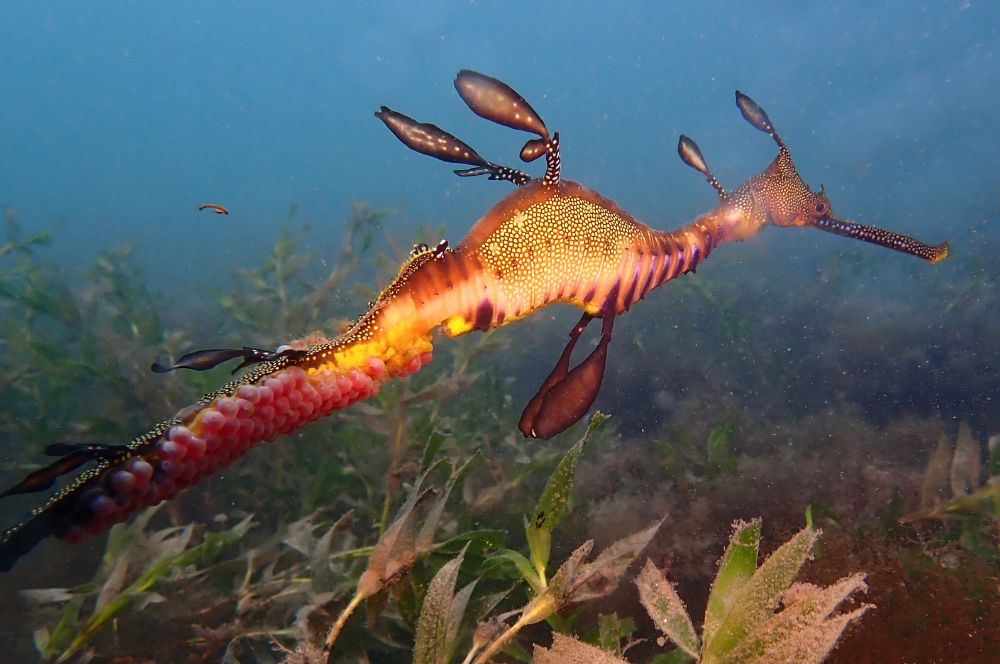
In South Australia’s cooler waters, divers have the opportunity to search for the elusive and mesmerising leafy and weedy sea dragons. These ornate creatures, with their elaborate camouflage, are the dragons of the underwater realm, and spotting them is a testament to the diver’s patience and keen eye. The leafy sea dragon, with its body covered in hard bony plates and leaf-like protrusions, blends seamlessly with the seaweeds and kelps, while the weedy sea dragon’s strong neck and long snout are equally striking.
These sea dragons feed almost continuously on mysid shrimp and small crustaceans, using their tubular snouts to create a strong suction force for feeding. Popular diving destinations like Kangaroo Island, Rapid Bay Jetty, and the Bluff in Victor Harbor offer guided diving tours that specifically seek out these elusive creatures, providing divers with the thrill of a rare sighting.
The best time to dive with the sea dragons is between September and November when they are most commonly sighted. Sites like Flinders Pier and Rapid Bay Jetty not only provide opportunities to spot the leafy and weedy sea dragons but also play host to a variety of marine life, including:
-
stingrays
-
eagle rays
-
cuttlefish
-
schools of fish
Exploring these waters feels akin to stepping into a fairytale, where mystical beings awaken beneath the waves during a scuba excursion. Encountering sea dragons and colossal cuttlefish is a must for any diver's bucket list.
Summary
Emerging from the enchanting depths of Australia's seas, we bring to the surface a collection of underwater gems that have embellished our Australian Diving Bucket List with extraordinary tales. From the vibrant coral sanctuaries of the Great Barrier Reef to the serene encounters with Ningaloo's whale sharks, and the haunting beauty of the SS Yongala's final resting place, Australia stands unrivalled as a diver’s utopia. Pursuing the pristine splendor of secluded atolls, the mystical giant kelp forests of Tasmania, and the camouflaged sea dragons of South Australia, each dive is a chapter in the grand saga of underwater exploration. So, adventurers, let this be the compass that guides your next odyssey beneath the waves, as you seek to uncover the submerged treasures from coral havens to sunken relics that Australia proudly unveils.
Frequently Asked Questions
Is Australia good for scuba diving?
Australia offers some of the best scuba diving in the world, with unique animals and vibrant corals in places like Sydney, Melbourne, and the Great Barrier Reef. It's definitely worth experiencing!
Which island has the best diving in Australia?
The Great Barrier Reef, including Lady Elliot Island, Flynn Reef, and Osprey Reef, offers some of the best diving in Australia, with a plethora of tropical marine life and spectacular dive sites. Christmas Island, off the coast of Western Australia, also hosts amazing diving experiences. Happy diving!
Do you need a license to dive in Australia?
Yes, you need to be certified to scuba dive in Australia! All dive operators require sight of your “C” Card or qualification papers before diving. Without it, you won't be able to dive.
What is the best time of year to swim with whale sharks at Ningaloo Reef?
The best time to swim with whale sharks at Ningaloo Reef is between mid-March and mid-July when these gentle giants migrate through the area. It's an incredible opportunity to witness these majestic creatures up close!
Can beginners dive at the Great Barrier Reef?
Yes, beginners can definitely dive at the Great Barrier Reef! There are plenty of options for introductory dives and guidance, so don't let inexperience hold you back.
Related Posts
-
Where to Scuba Dive in Australia: Uncovering…
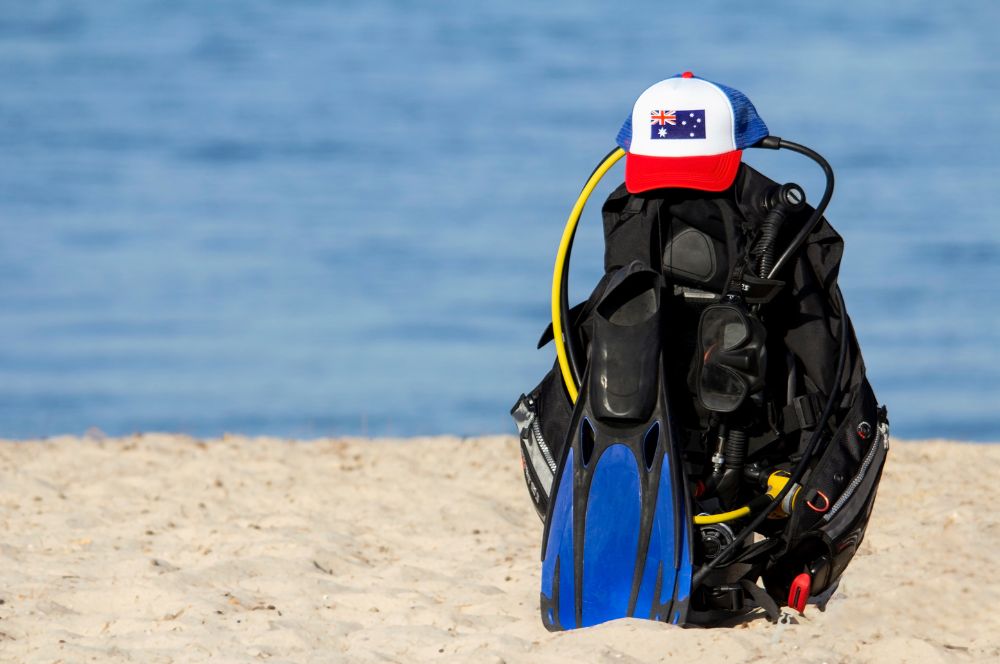
Where to Scuba Dive…
Where to Scuba Dive in Australia: Uncovering the Best Places Australia is an underwater paradise teeming […] -
Diving in Australia: Ultimate Guide…
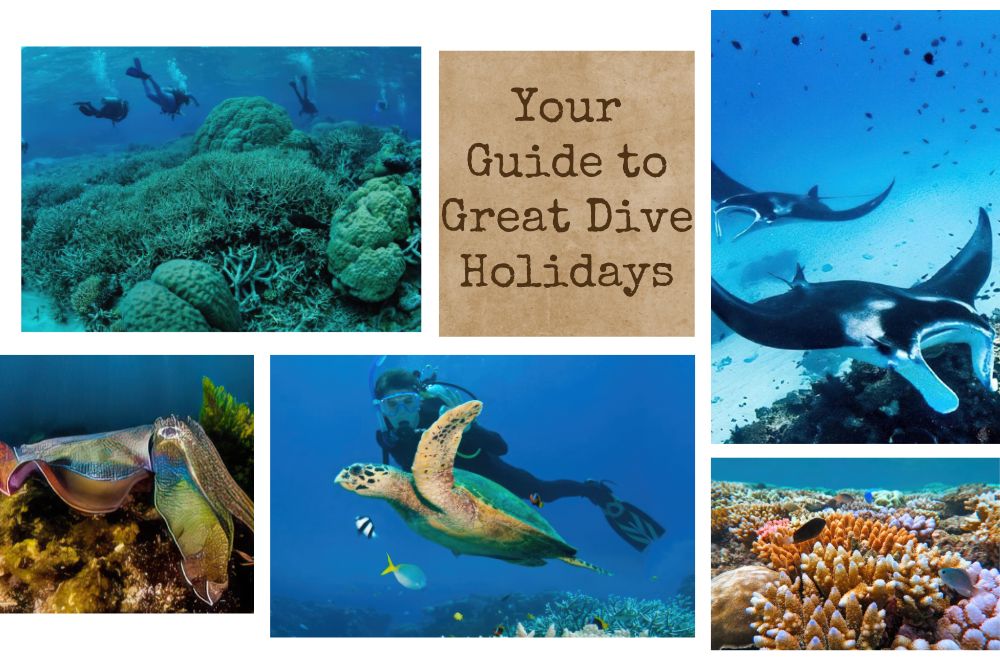
Diving in Australia:…
Unearthing Australia's Hidden Seascape: Your Guide to Great Dive Holidays Diving in Australia is like discovering […] -
Diving Australia | The Hidden Gems…
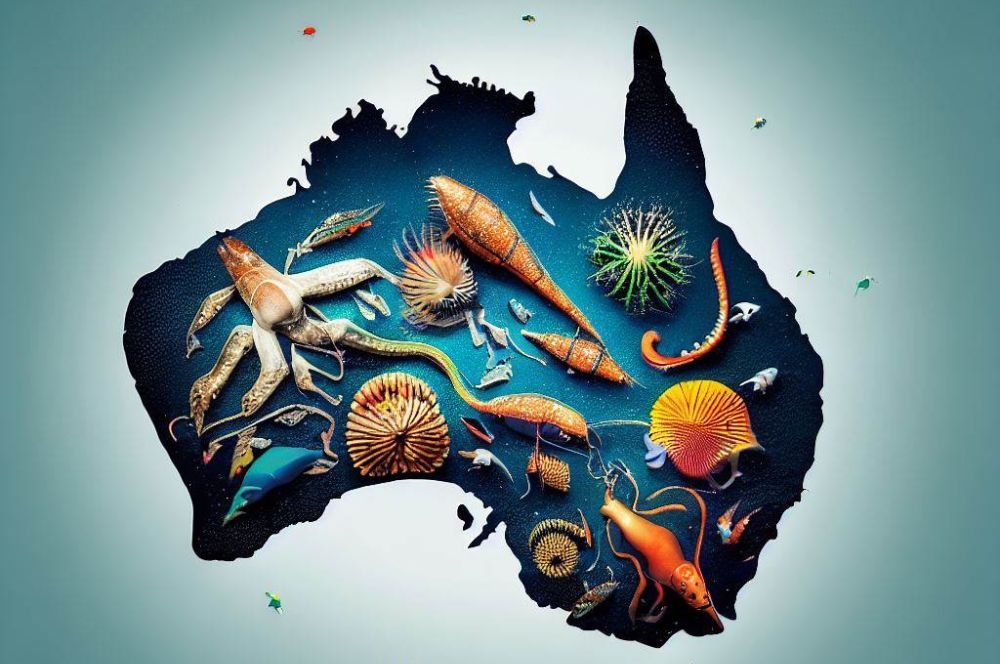
Diving Australia |…
Uncovering the Hidden Gems of Australia's Diving Scene Australia is known for its stunning landscapes and […] -
Bucket List Marine Animals for Scuba…
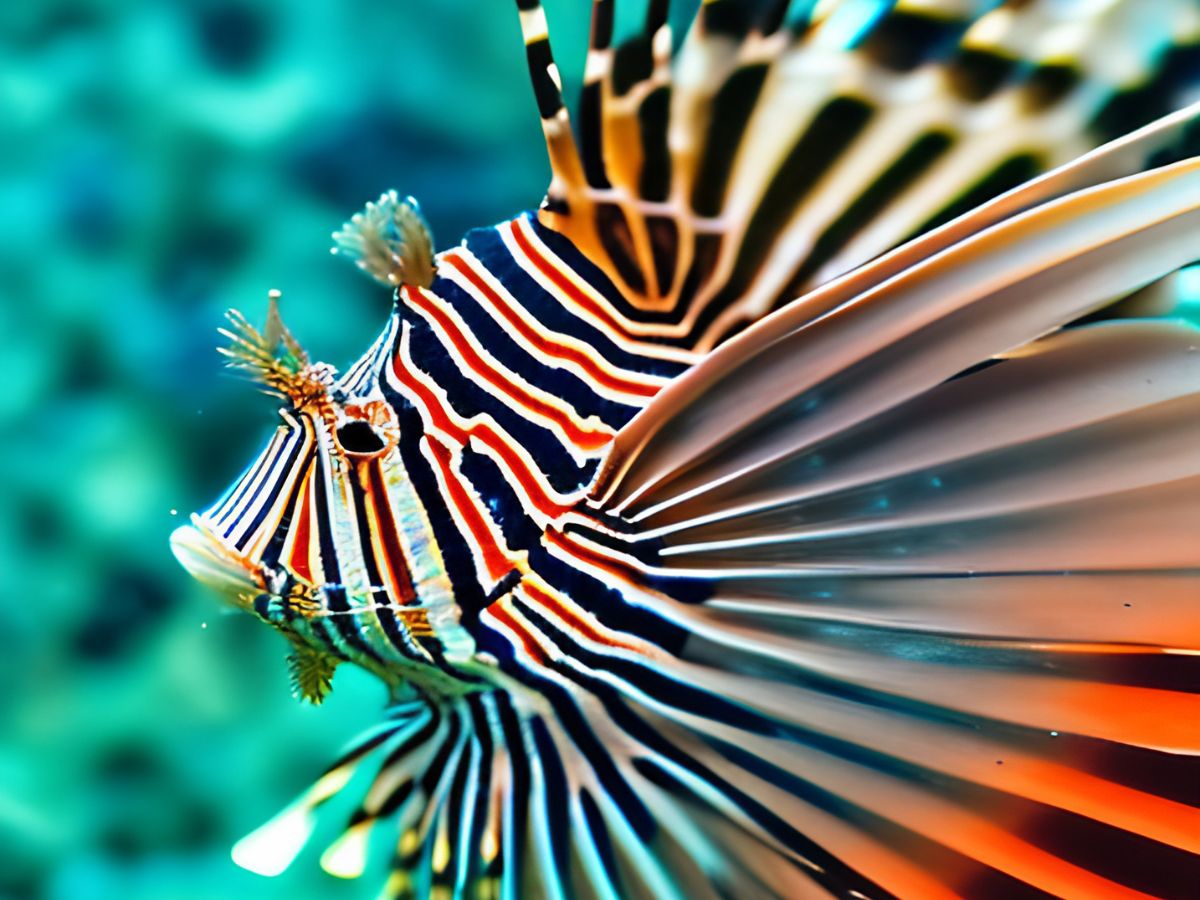
Bucket List Marine…
The top ten bucket list marine animals for scuba divers in Australia. Have you ever wanted to scuba dive […]
Recent Posts
